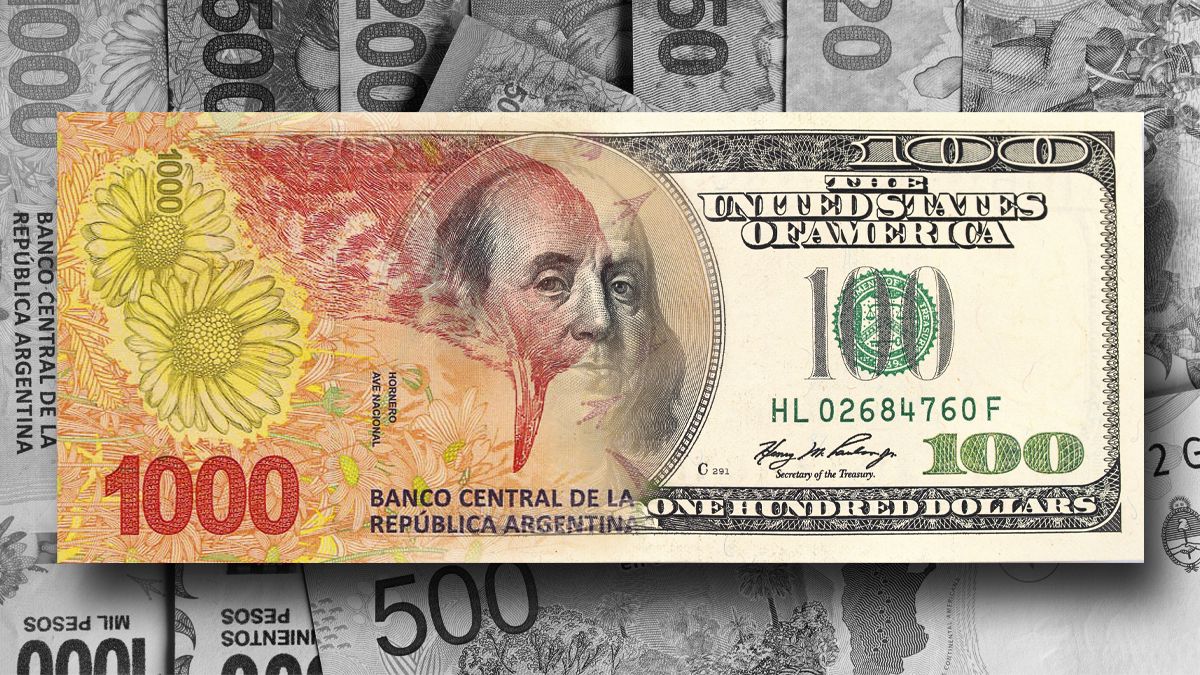With an extraordinary liquidation of agriculture of US$ 8,123 million, reserves only rose by US$ 887 million, while monetary liabilities rose by $1.4 trillion, this explains the rise in the target dollar for the month of October.
Deposits in pesos rose $1.3 trillion, which shows a lot of money in the banks, although the demand for money measured in 12 months shows a significant drop. Dollar deposits fall in real terms.
In terms of loans, a greater demand is not observed, although they grow below the expected inflation. For example, card financing grows at 70.6% per year and personal loans at 50.5% per year, when the target inflation would be around 85% per year. Recession.
How do you see the dollar?
We see it rising, we believe that we are going to a scenario of greater demand, for now there is a lot of money in the financial system, we have not seen a very large migration to dollars, but it would not take long to happen.
What would happen to the rates?
Interest rates are called to grow from 75% to 80% per year as a floor, perhaps a few steps higher.
How is the treasury being managed?
The economy ministry is offering more attractive interest rates for financing, a letter with a term of 73 days yields 109% per year, a bond in pesos that matures on October 17, 2023 yields 106.0% per year. This explains that the treasury wants to attract pesos to finance the state.
How much does the effective rate of a fixed term yield?
It is yielding 107.0% per year, for now it has yields very similar to a 73-day letter or a one-year term bond.
How is the foreign exchange market?
In the last 12 months the deficit is US$ 5,849 million
Can you explain it to me better?
Imagine a balance of dollars in the country, more dollars are leaving than entering, this explains the deficit of US$ 5,849 million, which is equivalent to 1.2% of GDP.
Anything to highlight?
The balance of tourism is deficient in US$ 4,738 million, this would be endorsing that we have a very backward exchange rate. An all-inclusive day in the Caribbean is worth similar to an apartment in Carilo facing the sea, without all-inclusive.
We lack financing
We need money to enter to finance the country, on the other hand, the outflow of dollars does not stop, this government does not generate confidence.
What happens to reservations?
The reserves amount to US$ 37,621 million, this implies 7.3% of the GDP: to have robust reserves we would have to have 20% of the GDP, this should be about US$ 110,000 million, something difficult to happen with this government.
We have twin deficits
Correct, the flow of pesos is in deficit at 4.4% of GDP, this is the fiscal deficit. While the dollar balance is in deficit at 1.2% of GDP.
The fiscal deficit does not include the quasi-fiscal deficit of the Central Bank
Very good point, it does not include it, if we had to include it we would have to add an additional 2.9%, this would imply a global deficit of 7.3% of GDP.
It would be a difficult thing to correct.
According to Vice Minister of Economy Gabriel Rubinstein, they could correct it in 3 years, and inflation next year could drop to levels of 60% per year.
Do you consider it likely?
I think it is an expression of good wishes, I see these forecasts as unlikely, the market discounts an annual inflation rate of 100% for a long time.
Soybean+Dollar+Pesos-2.jpg
How do you see the grain market?
China is in low demand, and this puts traders in a bad mood. We should analyze each particular case.
How do you see soy?
The exporters have merchandise to grind, I think they will make a void impossible to fill for soy holders. Soybeans are worth the same in the November 2022 position as in November 2023 U$S 367. This clearly shows that the market discounts that the producer, after the extraordinary sale for the soybean dollar at $200, is going to keep the merchandise for a long time.
How do you see the corn?
The December 2022 position is worth US$252, the April 2023 position US$249.50 and the July 2023 position US$220. 2023 price is similar to December 2022. However, the market sees a good late harvest and the July 2023 position is trading nearly $30 below April 2023.
What did the government do with the corn?
He asked the exporters to pay him the retentions of 8.9 million tons of first-class corn, this is crazy, because there will be no first-class corn in that amount to export. We are very tight with corn, we see its price rising. The government asks for money in advance, tomorrow it will not have it, ergo more deficit in the future, synonymous with more inflation and devaluation.
How do you see wheat?
The harvest estimates are very optimistic, I think we are going to have a difficult campaign, there will be no wheat, and the price will be very hot.
In this scenario there will be more inflation
The lack of wheat and corn will drive inflation up, which is why we believe that we are going to have a very important monetary disorder, which ends up adjusting the official exchange rate and the alternative dollars.
Is there inflation in dollars?
The official dollar increased 49.2% in the last 12 months, and inflation would be around 85% per year, there is very high inflation in dollars. This cannot be sustained over time.
Will the government propose a stabilization plan?
We hope so, we see that at some point you will have to devalue the official exchange rate. At this rate, by the end of the year, the wholesale dollar would be at $180, and the alternative dollars at $400, which gives you a gap of 122%. Currently, the average of alternative dollars is $302, against a wholesale dollar of $147.3, which does not give a gap of 105%.
A $400 dollar by the end of the year doesn’t seem crazy.
Not at all, on the other hand, the rates are all above 100% per annum.
How much does the rate imply of the future dollar?
For the average of all prices, 124.5% per year.
Do I buy future dollar?
Not at all, future positions have discounted a scenario of high devaluation, with these rates it is impossible to beat the Central Bank.
Source: Ambito
David William is a talented author who has made a name for himself in the world of writing. He is a professional author who writes on a wide range of topics, from general interest to opinion news. David is currently working as a writer at 24 hours worlds where he brings his unique perspective and in-depth research to his articles, making them both informative and engaging.




